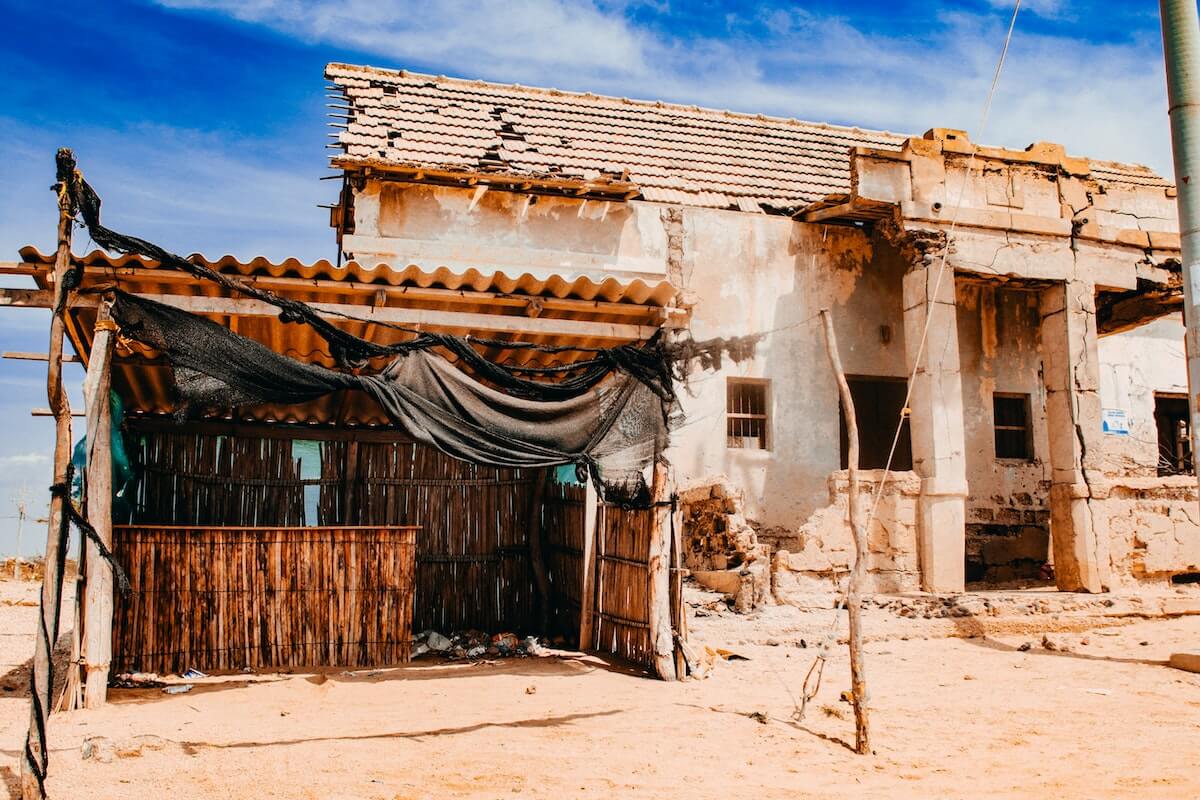Blood In, Blood Out sounds gory but isn’t.
It’s not a horror film or a documentary about a day in the life of a phlebotomist.
It’s a three-hour epic crime drama seemingly lost to film history for many of us.
The title phrase refers to gang life: you join with a kill (Blood In), and you only leave if you get killed (Blood Out).
I’d only heard of the film as an early Danny Trejo role.
And Machete himself is here, but the movie has more Mexican-American power-ups.
Shot on location throughout Los Angeles and released in the early 1990s, the film tumbled out after the LA Riots.
And it was released a few years after Spike Lee’s Do the Right Thing and John Singleton’s Boyz in the Hood.
Blood In, Blood Out seemed poised to join the club of those cultural landmarks — films that are authentic portraits of marginalized communities. And in this case, the Mexican-American one.
Instead, the picture stumbled. It made back reportedly less than $5 million of its $35 million budget, and the critical response was mixed.
But I was the one living under a rock here, not the movie.
When I searched for it on Reddit or read YouTube comments about Blood In, Blood Out, I learned it’s considered a rite of passage, a cult classic some Mexican-Americans claim, in jest, all Mexican-Americans of a certain age have seen.
Even in 2023, on the film’s 30th anniversary, the local Los Angeles news station ABC7 reported about its community relevance.
But as an outsider, would the film be a good watch?
Let’s find out.
So is Blood In, Blood out a good movie?
Note: the film is also known as Bound By Honor or Blood In, Blood Out: Bound by Honor.
And many viewers know it by its Spanish title, Sangre por Sangre – which I think translates directly as “blood for blood.”
The Plot of Blood In, Blood Out:
Young Miklo Velka (Damian Chapa), after a fight with his abusive dad, relocates to East Los Angeles.
Miklo is reunited with his cousins, Vatos Locos gang members Paco Aguilar (Benjamin Bratt) and Cruz Candelaria (Jesse Borrego).
Soon, the Tres Puntos gang starts a turf war with the Vatos Locos.
From the fighting, Cruz suffers a horrific back injury. Miklo shoots the leader of the Tres Puntos, Spider (Ray Oriel), dead.
Miklo and Paco get arrested. While Paco is able to join the Marines instead of punishment, Miklo ends up with a prison sentence.
From here, the film follows Cruz’s journey and struggle as a heroin-addicted artist, Paco’s quest for redemption through police work, and Miklo’s rise to power in the prison gang known as La Onda.
As their life paths diverge, will the bonds between the relatives break or reunite them?
The Rest of the Main Cast Includes:
- Enrique Castillo as Montana Segura
- Delroy Lindo as Bonafide
- Victor Rivers as Magic
- Tom Towles as Red Ryder
- Carlos Carrasco as Popeye
- Theodore Wilson as Wallace
- Geoffrey Rivas as Carlos
- Raymond Cruz as Chuy
- Valente Rodriguez as Frankie
- Billy Bob Thornton as Lightning
- Lanny Flaherty as Big Al
- Danny Trejo as Geronimo
- Luis Contreras as Realthing
- Victor Mohica as Mano
- Ving Rhames as Ivan
- Richard Masur as Prison librarian (uncredited)
- Thomas F. Wilson as Rollie McCann
- Lupe Ontiveros as Carmen
- Natalija Nogulich as Janis
- Jeffrey “Taz” Tanzella as inmate
If you’d like to see a trailer, it’s available here on IMDB.
The Good Things:
Performances, +2 Points
Though the film has a bit of a camp factor at times (which I’ll get to), the performances made these characters iconic.
Benjamin Bratt’s Paco rolls around in a “wife beater,” presumably because his guns couldn’t fit in standard shirt sleeves.
His gestures, walk, and posture always hold him up as the leader in the film’s first act. And later, after his transformation, he’s a convincing undercover agent and now-dedicated policeman.
For me, Cruz (at the right of this photo) is like the jester of the trio – the talent. And
Jesse Borrego plays the happy and sad clown with aplomb. He keeps the spirits up or shows you how downtrodden things have gotten.
Damian Chapa shows us Miklo’s fear and later ability to be feared.
Half-Mexican, Miklo always wants acceptance from his peers – no matter the cost, even in human life, to get it. And Chapa carries a sensitivity that leaks through Miklo.
And so many supporting characters make a memorable mark.
Enrique Castillo’s Montana Segura (at left), the Yoda of La Onda, is a gang leader who always has his nose in a book. He’s darkly poetic and after better lives for his fellow Mexicans.
Carlos Carrasco’s Popeye is not to be trusted and is often hilarious.
Victor Rivers’s Magic is serious muscle and mustache.
And Delroy Lindo alternates from ice cold to boiling heat as Bonafide (on right).
Apologies to anyone I didn’t mention, as I could go on and on here.
Real Locations, +3 Points
The movie glides through an authentic “East Los” barrio full of murals, sidewalks, and sunshine.
We watch our young characters cruise in a freshly painted ride and gather together with family.
It’s an East Los Angeles of pride in where you live and where you come from.
And the film gives an intimate portrait of San Quentin Prison because a risky and hard core decision was made to shoot on location.
You can imagine some cast and crew had reservations about hanging out in a notorious prison every day.
In the behind-the-scenes making of documentaries, director Taylor Hackford mentioned
he was warned by the warden that there are no hostage negotiations for captured San Quentin visitors.
Yikes.
But the gutsy decision paid off. Despite coworking with felons, thankfully, there were not any incidents.
And boosting the movie, many real-life San Quentin guards, inmates, and even the warden appeared as extras or served as technical advisors.
Danny Trejo probably didn’t need much coaching. Before taking up acting, he was an actual prison inmate. And I have to wonder how that was for him — to come back in a different capacity and if he even recognized or reacquainted himself with some of the inmates.
He definitely seems to have found the old weight machines around the yard though, because he’s looking fit and menacing as ever (at the right of the photo).
And while the racially-segregated prison gangs in the film are fictional, they are based on real-life counterparts.
This dedication to locations and authenticity has made the actors’ jobs easier when it came to getting into character. And the film draws power from realism.
Amazing Art and a Commentary, +1 Point
**Some Spoilers Here**
Cruz is a talented artist, and we see many of his works.
To give them flavor and power, artist Adan Hernandez painted all the art in the movie supposedly made by Cruz.
Hernandez delivers Cruz’s portraits and murals of his pals, bringing an urban cool and pride to his young gangster friends.
But it’s not all glamor.
Hernandez’s works have been dubbed “Chicano Noir” in real life; and, yeah, that emotional darkness comes into his work.
When Cruz leaves one of his needles lying around and passes out high, it’s picked up by young Juanito, who injects it, overdoses, and passes away.
Heartbroken, Cruz’s pain of loss over Juanito’s death is palpable, and some of his paintings are so terrifying you want to look away but can’t.
In one, he’s painted an image of himself, his face pained, a knife dragging across his own belly. In the cut, we can see the face of a young boy – Juanito.
In another, what looks like a Saint, perhaps the Virgin Mary, is praying above a nest full of bones. The grim reaper, scythe and all, looks wrapped around the painting, possibly stealing the youngling before they can take off.
And Cruz’s path delivers a thinking moment.
With his talent, Cruz is on his way to stardom. He has a promoter, and we have a scene at one of his exhibitions.
And you can’t miss the contrast here between him and the patrons.
The paintings depict young East Los Angeles gangsters on the street who couldn’t afford the price tag of the work they’re in. And the paintings are being bought by rich white buyers who will presumably hang them in their safe houses on the other side of town.
Cultural exploitation isn’t a central theme of the film, but you can’t unsee it in these moments.
Long Running but Spicy, +2 Points
I love long films, and this movie gives itself the space to breathe, taking place over 12 years, from 1972 to 1984.
It’s three hours long, but with three protagonists, none of their character arcs are short-changed or dragged out.
It makes sense that Miklo has two or three times the screen time Paco and Cruz have.
His journey into joining the prison gang La Onda and his transformation from a new fish to a calculating gang leader is the most compelling narrative in the movie.
It’s not quite The Godfather, of course. But the epic crime story here has its pulpy enjoyment.
Montana takes Miklo under his wing. And his tutelage pays off, with Miklo rising from fledgling member to councilmember with ambitions for the top.
And as La Onda fights with physical force or power plays against the Black Guerilla Army and the Aryan Vanguard, the drama box is stacked. You never know when an inmate is posturing or genuinely ready to attack, to pull out a shank and take somebody out.
Meanwhile, Cruz fights his addictions and struggles to get clean. He wastes away, isolated, but always painting those tremendous, nightmarish works.
Paco’s undercover police work brings some shoot-outs. And there are solid dramatics as he attempts to pull Cruz and Miklo straight, bearing guilt for what’s happened to their lives that he influenced for the worse.
Despite being a gang and prison film, it focuses on the emotions of the characters, and that’s what draws you in.
Pulled a Good One in that Wrap-Up, +1 Point
The movie detours from the rise-and-fall gangster narrative like Scarface or Goodfellas.
Instead of some downfall and credits roll, it finishes with a satisfying thematic resolution grey as modern life.
I won’t spoil it for you. But the final moments touch on loss, forgiveness, brotherhood, and the pressures of life in “East Los.”
Instead of drowning in its three-hour runtime, it turns out the movie was swimming to shore.
Dialogue and Culture, +2 Points
I’m a white boy. As a kid growing up in So-Cal, I thought the phrase was “O-De-lay,” not “Orale” (a slang term for nice or a stamp of approval).
At best, I can order takeout in Spanish or ask where the bathroom is. So I’m not the one to grade the authenticity here.
But if you look around Reddit forums or YouTube comments about clips of this movie, plenty of Mexican-Americans take the film as legit.
And that’s because director Taylor Hackford didn’t want to do a hack job of depicting Mexican-American culture.
So Hackford teamed up with poet Jimmy Santiago Baca to get it right, asking Baca to write the screenplay. With the right source material, all Hackford had to do was tell the story with the camera.
Baca had never written a screenplay before, but he managed this by tapping into his life experiences (screenplay credits include Jeremy Lacone and Floyd Mutrux, with a story by Ross Thomas).
And it’s a highly quotable movie. There’s the familiar utterings of “simon.” Paco quips to Miklo, “Life’s a risk, Carnal.”And in prison, there’s Popeye’s terrifying demand to “Give me chon!”
And for levity, there’s the way the gang teases each other or Cruz’s funny dancing when he’s after a woman, swiveling his hips like some kind of flightless bird and the other gang members jeering at him.
But sometimes the commitment to cultural flavor gets hokey.
The characters will say something in Spanish and then blurt out the meaning for English-only audiences.
For example, Miklo talks about his cumpleanos with his mom and then repeats for the audience, not for her, “My birthday, remember?”
But these little moments float away.
Not-As-Good Things:
Cheese Factor, -1 Point
**Some Spoilers Here**
I’m only going to take away a point for this. Some of you might argue it’s what makes the movie enjoyable.
But in some emotionally charged scenes, the characters’ reactions are near soap opera worthy.
For example, When Paco has had to arrest Miklo, Miklo lies in a hospital bed, recovering from an injury.
As Paco tries to lecture Miko on what his life has become, Miklo responds angrily and strained to everything – Damien Chapa, I hate to say, overacting the moment (but like I said, I still enjoy his performance).
Miklo tells Paco, “Get out, Puto! You’re not my blood!” But we can’t take him seriously because it’s starting to get comical, his voice raised, the veins showing in his neck.
Miklo tells Paco, “You don’t exist for me anymore!” Then he lays his head back down on the bed. And instead of rolling his head naturally, he mechanically snaps it away from Paco to the right. It’s one planned motion, almost like a child refusing to look at their best friend because they ate their candy or something.
While I enjoy the performances overall, I’m surprised these are the takes they went with.
Hackford was aiming for a serious tone, and these moments break it.
Should I Watch Blood In, Blood Out?
Total Arbitrary Points Score: 10 Points
Few would argue Blood In, Blood Out, released in the early 1990s, reaches the heights of breakthrough films like Do the Right Thing or Boyz in the Hood. It’s too much ham and cheese to pull off that kind of milestone status.
But the movie’s earnest efforts to depict cultural experiences and, for Miklo, prison life, have won it plenty of fans, especially among Mexican-Americans.
Sometimes, films like this are accused of glorifying gang life. But there’s no risk of that here.
Miklo’s time in prison hardens him into a calculated killer. And many would see the threads that brought him there – brotherhood with his kin – potentially as forces many of his real-life counterparts could face.
And with its three-hour runtime and 12-year time span, I enjoyed its commitment to telling a long, compelling story in an emotional but pulpy fashion.
Shooting on location in San Quentin, written by a poet with true-life experience around the subject matter, and hiring an artist who can paint some kickass murals and paintings — the film’s dedication to authenticity paid off.
So if it interests you, take a risk, Carnal, and give this Mexican-American cult classic a watch.
What is the Legacy of Blood In, Blood Out?
This article has already spoken to much of the film’s cultural importance; so we’ll go down some side roads.
The film is often compared to American Me, which is said to be similar because it depicts the rise to power of the Mexican Mafia in the California Prison system from the 1950s to the 1980s.
And oddly, Edward James Olmos (Battlestar Galactica), the star of American Me, was offered to direct and star in this one. But that ended up falling through.
Director Taylor Hackford, who had already won an Academy Award for his live-action short film Teenage Father in 1979, would go on to direct Ray, which was nominated for the Academy Award for Best Director and Best Picture. He’s also the director of The Devil’s Advocate.
Damian Chapa, who played Miklo, continues to have a long film career. Most notably for me, he played Ken Masters in another cult movie of sorts, 1994s Street Fighter, based on the video game.
Jesse Borrego, who played Cruz, looks like he is still acting. He’s most well-known for playing Gael Ortega in the TV show 24 and George King on Dexter.
You probably recognize Benjamin Bratt. He’s had roles in Stallone’s Demolition Man and movies like 2000’s Sandra Bullock vehicle Miss Congeniality. He voiced Ernesto de la Cruz in the Pixar Dia De Los Muertos animated Coco. He also has four American Latino Media Arts Awards, a Screen Actors Guild Award, and a Primetime Emmy Award nomination.
Despite Mr. Bratt’s accolades, he still couldn’t escape appearing in 2004’s Catwoman, an absolute mess. I don’t blame him for the film’s failings, of course.
Apologies to any actors I didn’t highlight, as I can’t get to everyone.
The film is a piece of pop culture. Many of its most iconic phrases are available as novelty stickers on Amazon or the like. And I’ve even seen gag gifts like Popeye’s red underwear.
Well, that’s an odd place to stop, but it’s all I got for now. Thanks for reading.
Enjoyed this Post?
Thank you so much. If you’d like to get a ping when I have a new article, you can join my newsletter below.
Disclaimer:
This review’s factual information was gathered through online sources, like Wikipedia, IMDB, or interviews. Misrepresentations and errors are possible but unintentional.
Making art is hard. This is a fan’s blog. Any criticisms are meant to be constructive.




